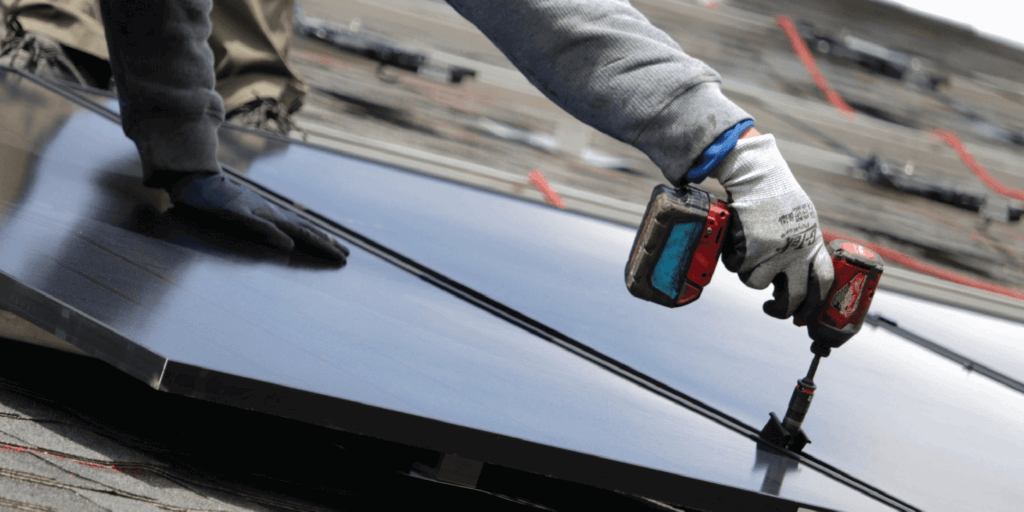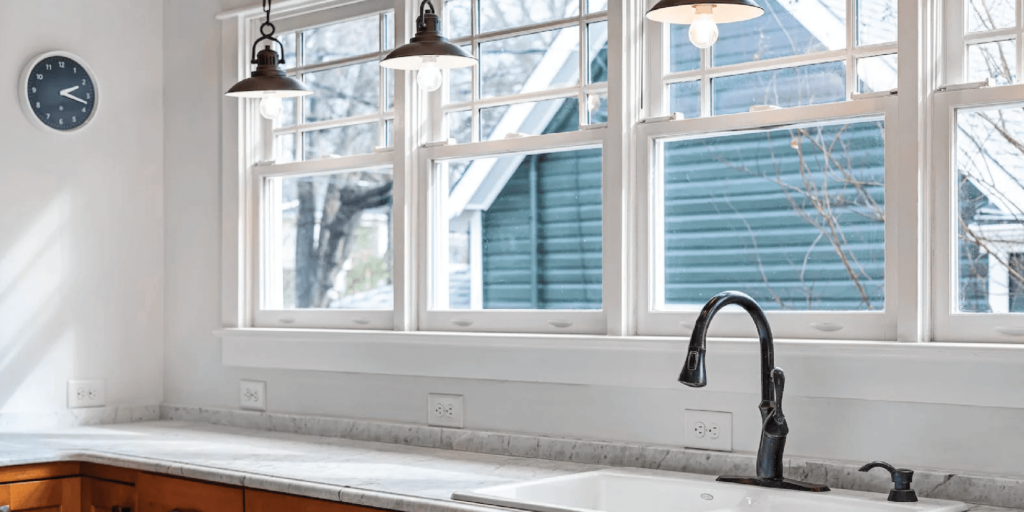
There are increasing costs everywhere – whether it is groceries, gasoline, or utilities. These are often unavoidable rises in cost of living, and fortunately, many savings can be found through loyalty programs, coupons, and wholesale buying. However, these do not account for rising electricity costs, which are typically out of homeowners’ control.
Saving energy is not only a cost-effective way to combat rising energy bills, but also a way to reduce the nation’s overall energy demands – 22% of the United States’ energy use is attributed to residences, and much of it is wasted through inefficient systems and setups. The typical American family spends at least $2,000 every year on utility bills1.
Luckily, there are steps homeowners can take to reduce their energy usage and utility bills that require almost no effort.

1. Install a Renewable Energy System and Storage Solution
Become more energy independent by installing a custom rooftop solar panel system and generating or storing your own power. The National Renewable Energy Laboratory reported the number of US homes with installed solar panels continues to increase at an average of 32% per year, resulting in over two million residential solar systems already in the United States.2
Going solar can help you reduce your monthly utility bills and save long-term. When homeowners decrease their reliance on local utility companies and rely on the largest power generator on earth, they can increase their monthly and yearly savings without lifting a finger! Solar energy is one of the cleanest forms of energy production and homeowners can cover or exceed all of their energy needs, as well as participate in specialized programs and incentives like net metering. According to EnergySage, solar owners can save anywhere from $20,000-$97,000 on electricity costs over the lifetime of their solar panel system, with a lifespan of 25+ years.3
Investing in battery storage or other at home storage solutions can also help ensure you have solar electricity available when panels are not operating at peak efficiency – either at night or in an emergency.
2. Control Indoor Temperatures and Use Ceiling Fans
An optimal temperature for electricity savings is about 78 degrees Fahrenheit4, because air conditioning typically makes up a large portion of monthly utility bills – central air conditioning units cost $98 per month, on average. For every degree you set your thermostat to above 72 degrees Fahrenheit during the summertime, you can save up to three percent of your air conditioning expenses.4
A great way to optimize your air conditioning costs is to set the thermostat to a higher temperature at night and when your home is unoccupied. Smart thermostats can help with scheduling daily programming, or you can set it manually.
Another energy efficient method to keep your home cool is to make use of ceiling fans. Running a fan 24/7 costs about $5 and the extra airflow can reduce the temperature as much as four degrees4, making it easier to set your thermostat higher without the temperature rising. For optimal performance and air circulation in the summertime, the blades should rotate counterclockwise to push air down and create a breeze, and in the wintertime, they should rotate clockwise to push cooler air up and out of the way.5

3. Window Improvements and Insulation
Replacing windows and improving home insulation can affect a home’s energy needs. During cooler months, poorly insulated windows and walls can lose heat, and in warmer months, cool air can escape. In fact, temperature fluctuations because of poor windows can be responsible for 25-30% of residential heating and cooling.6
Replacing old, single-pane windows with more energy-efficient double or triple-pane models is a simple way to improve your overall temperature. Some windows have insulating gas between the panes, low-emissivity coatings reflecting heat back into the room (curtains are an effective way to keep that heat out during the summer) and are designed to prevent drafts.7
Upgrading insulation in your walls, attics, and crawl spaces is another effective way to reduce energy consumption. Similar to newer windows, proper insulation prevents heat from escaping, making it easier to maintain a comfortable household temperature. It can also help prevent drafts and reduce noise from outside. There are many types of home insulation, including fiberglass, cellulose, and spray foam, each with different advantages and disadvantages. Homeowners should consult a specialized contractor to decide which type of insulation will best fit their needs.8
4. Unplug Devices to Reduce Phantom Energy
According to the Department of Energy, if homeowners unplugged all of their devices and chargers when not in use, they could save up to $100 on their energy bill each year.9 This includes phone chargers, toasters, computers, televisions, and other electronics. Despite being powered off, these devices continue to use or pull energy and create heat in the wiring. When you combine the small impact of each individual device, it can impact your home’s energy usage. This energy usage is called phantom or vampire energy, and every year, it consumes enough energy to power 11 million homes, costing homeowners about $200 in extra energy costs each year.10
Phantom Energy: electricity actively pulled by devices that are plugged in but not in use.
Unplugging each device can be a hassle, so installing power strips is a convenient and efficient way to help reduce extra energy usage since all devices can be pulled into a single source. Most models have a switch to shut off power circulation, or you can invest in a smart power strip, a newer addition to energy efficiency products. Smart power strips can detect when a device has entered “sleep mode” or is turned off and will automatically stop energy flow.

5. Turn Off the Lights and Switch to LED Light Bulbs
Turning off the lights is an easy and foolproof way to save energy. Utilizing natural light during the day can reduce the need to turn lights on to begin with.
Most homes are equipped with LED lightbulbs, but 71% of homes have at least one incandescent lightbulb still shining.11 Incandescent lightbulbs are the least efficient light source, with up to 2,000 hours of usage time and hundreds of watts used for 90% heat and 10% light production. LED lightbulbs last 50 times longer and use 75% less energy than incandescent bulbs. According to the Environmental Protection Agency (US EPA), if every home in the nation changed one incandescent lightbulb to an LED lightbulb, Americans could save about $700 million every year in energy expenses, collectively. Learn more about LED lightbulbs and the difference they can make.
6. Make Efficient Household Appliance Upgrades
Household appliances are the largest consumers of electricity, but there are ways to reduce the costs associated with using them.
The first option is to upgrade to EnergyStar labeled appliances. While the initial expense can be intimidating, the long-term savings are worth it. These devices can use 75% less energy than non-EnergyStar products. EnergyStar labels are granted through a series of requirements set by the US EPA, including energy savings nationwide, increased energy efficiency, and performance and consumption that is measured and verified. These guidelines are updated regularly to maintain efficient standards.12
Performing regular maintenance on appliances, especially heating, ventilation, and air conditioning systems (HVACs), can help as well. Clean out any dust buildup, ensure furniture isn’t blocking the air flow, and regularly check the coils, evaporators, and other essential components to keep all of the systems in your house running smoothly.
Another option is to reduce your hot water usage. The United States Department of Energy (DOE) has reported water heating can account for 20% of a home’s total energy usage, reducing the overall cost of your utility bill.13 Washing clothes in cold water is better for most fabrics, and almost 90% of energy used by washing machines goes towards heating up water on hot cycles.14 The same goes for washing dishes, and letting both clothing and dishes air dry can reduce energy usage.
Your refrigerator uses a large portion of energy consistently as it is always pulling electricity to maintain specific temperatures. Setting it between 35- and 38-degrees Fahrenheit is ideal for food safety and energy efficiency,15 with a freezer between 0- and 5-degrees Fahrenheit.16 Continually check the seals are tight and coils are in good condition to help keep efficiency high and problems low.

Turn to a Reliable Source for Your Energy Needs
Blue Raven Solar is one of the best solar panel system installers in the nation. We believe in bringing homeowners clean energy and saving them money along the way. With custom systems created to meet each homeowner’s unique needs, we work to provide the best services to our customers.
Looking for new ways to save money can be difficult, but Blue Raven Solar makes the switch to clean energy smooth and simple.
Footnotes:
[1] https://www.energy.gov/sites/prod/files/energy_savers.pdf
[2] https://www.nrel.gov/docs/fy21osti/80427.pdf
[3] https://news.energysage.com/much-solar-panels-save/
[6] https://www.energy.gov/energysaver/update-or-replace-windows
[7] https://www.energy.gov/energysaver/window-types-and-technologies
[8] https://www.energy.gov/energysaver/types-insulation
[9] https://www.energy.gov/energysaver/articles/3-easy-tips-reduce-your-standby-power-loads
[10] https://www.nrel.gov/docs/fy14osti/60461.pdf
[12] https://www.energystar.gov/products/what_makes_product_energy_star
[13] https://www.energy.gov/energysaver/water-heating



Sorry, the comment form is closed at this time.